Best low maintenance indoor plants: 11 easy-care plants that anyone can grow
No green fingers are needed for the best low maintenance indoor plants. Choose wisely and even a beginner can keep them alive


The best low maintenance indoor plants only need a few minutes of attention each week to thrive. In return, research shows that they can boost our mood and cleanse the air we breathe. As a major added bonus, indoor plants bring an instant injection of style to an interior, and there’s something to suit any size apartment, rented room, college dorm or house.
You don’t need to be an expert in horticulture to raise an indoor plant. While some varieties may need special care, there are plenty which will thrive with the least amount of attention.
Just as you'll find when buying best low maintenance plants for your garden, the plant label on indoor varieties will always advise on the best spot to place it too. It’s essential to follow this advice as some houseplants do need more light than others. Make sure that the plant is growing in a pot with drainage holes or it cannot survive.
Apart from that, a basic watering routine, an occasional wipe of the leaves and a drop or two of soluble plant food in the spring or summer, and you can look forward to happy, healthy foliage on your low maintenance houseplants for years to come.
Best low maintenance indoor plants: 11 easy-care options
If you love low maintenance garden ideas and are looking for the same hassle-free approach to your houseplants, our edit of the best low maintenance indoor plants is just what you need.
1. Kentia Palm

If you want to make a statement in your home with the best indoor plants, this tough yet elegant plant with strappy, dark green leaves, could be the answer. It can grow to around 10ft (3m tall), and it won’t need constant care.
Position in bright light, away from direct sunshine. Water in spring and summer but aim for moist, not soggy, compost. Feed once a month in the spring and summer.
In winter, avoid placing it next to a radiator or heat source, and mist the leaves regularly with plain water, especially if you have a warm house.
2. Money Plant
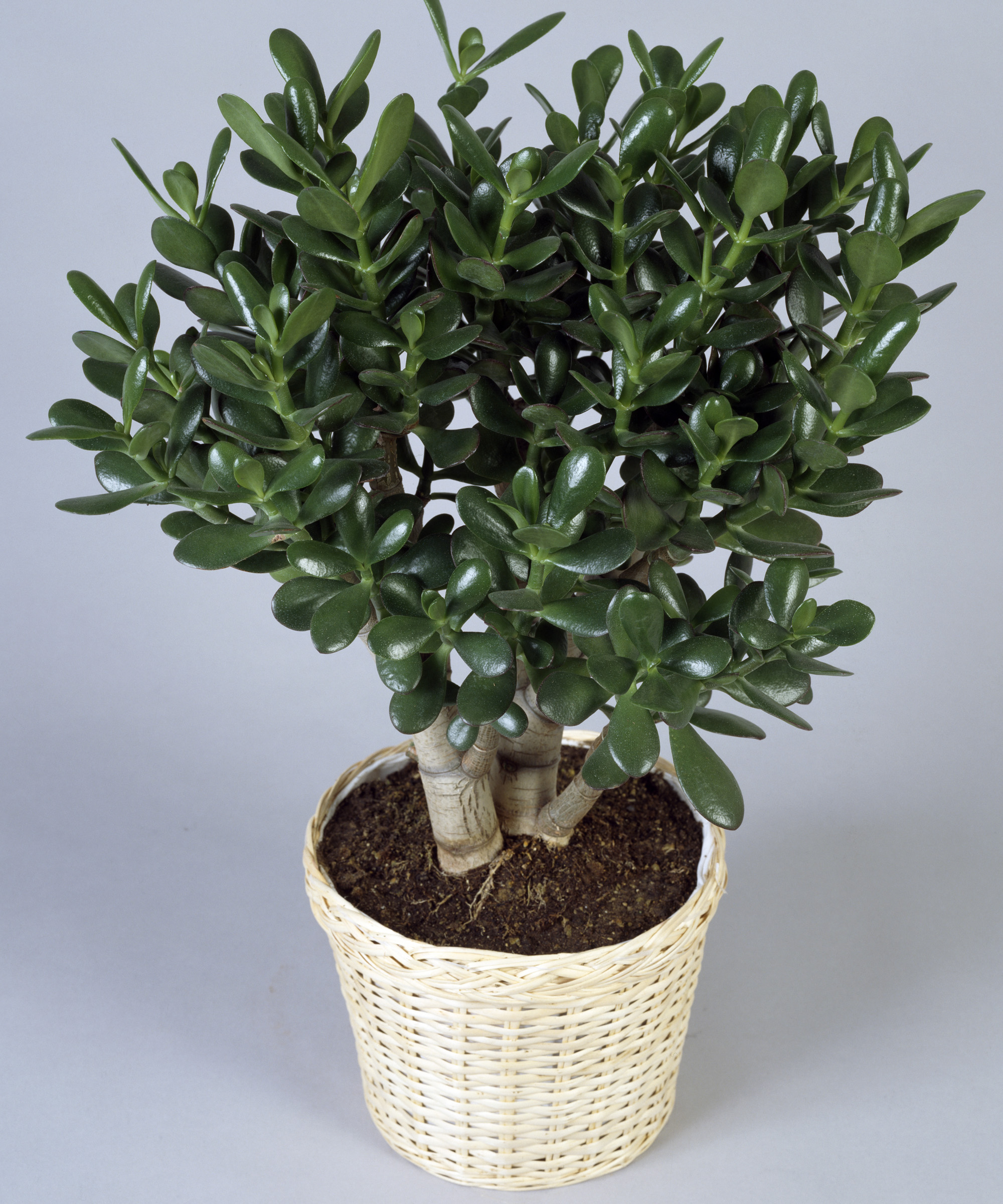
Money plants, also known as jade plants, are so simple to look after, making them an obvious choice for our list of the best low maintenance indoor plants. What's more, they are said to bring good fortune to their owners, and we'd all love a bit of that!
They are succulents, with plump, oval leaves on a tree-shaped stem. Place on a sunny window ledge, and let the compost dry out between watering days. They only need feeding twice a year: once in spring and once in the summer. If the leaves look shriveled, they’re not getting enough water, so add a little on a daily basis until they plump up again.
Although these are super-tolerant plants, if you need to move them to a new spot, do it gradually, as they can react to a sudden change of location by dropping a few of their leaves.
There's more top tips on how to grow succulents in our dedicated guide.
3. Snake plant
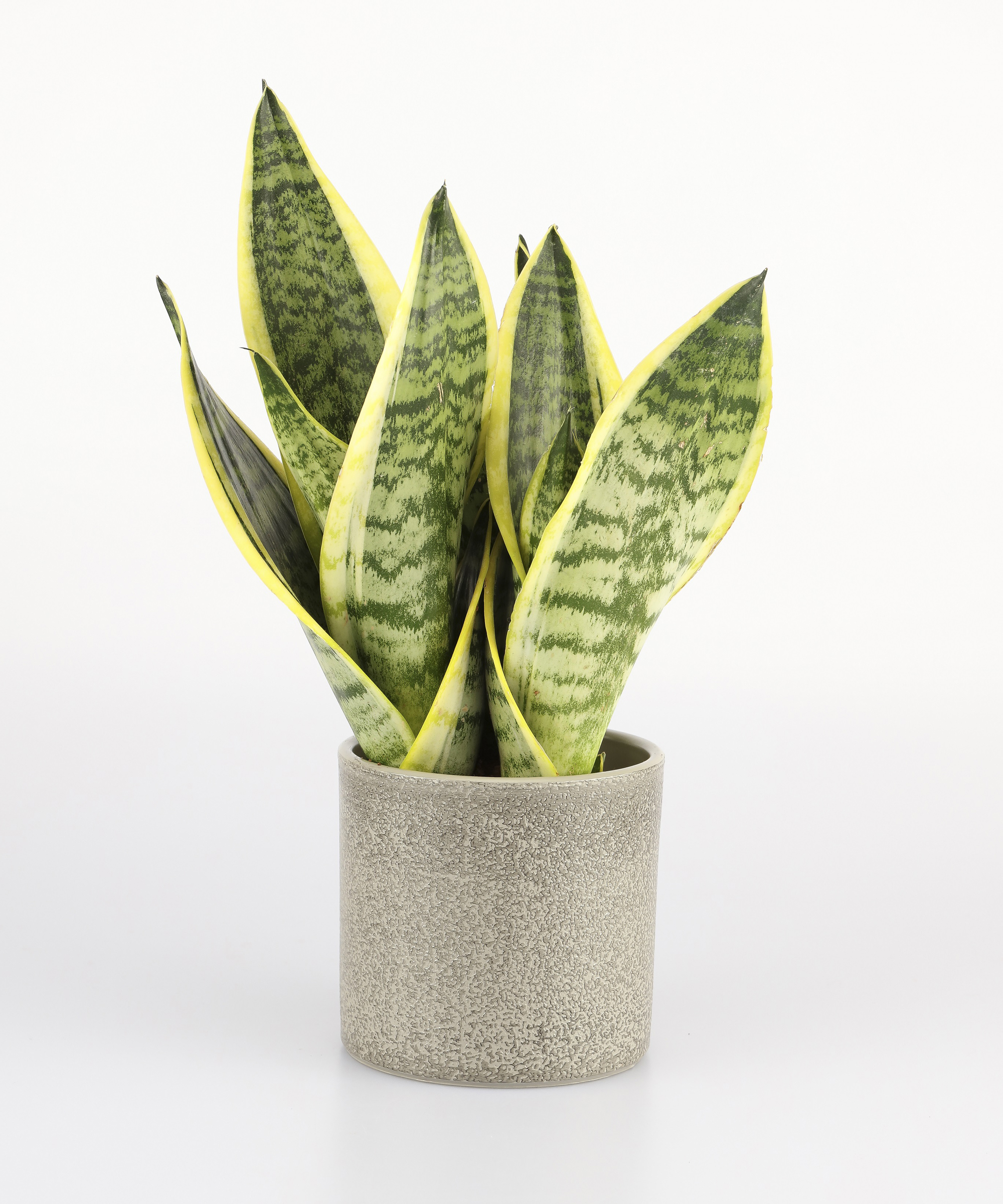
Even the least green-fingered person would have to try hard to kill the snake plant, also known as Sanseveria trifasciata or Mother-in-law’s Tongue. It has stiff, upright pointed leaves in variegated greens which will create an exotic look for your indoor garden ideas.
This plant isn’t too fussy about a location, but try to put it somewhere with bright light, away from direct sun. It can go for a month without water, but if it starts to look wrinkly, it definitely needs a drink. Yellowing leaves are a sign that you have overdone it. The only care it needs is an occasional wipe of the leaves to keep them shiny and dust-free.
4. Spider plant

These plants, with their fountains of variegated pale green leaves, are one of the best plants for beginners. The number one rule is to put them in a spot away from direct sunlight. Keep the compost moist but never soggy. Feed with a houseplant food every couple of weeks in summer only.
If they develop brown leaf tips, it’s probably because they are in a hot, dry room or it may be a result of underwatering. Simply cut off the brown bits and move the plant to a cooler place, then up the feeding and watering routine.
5. Peace Lily
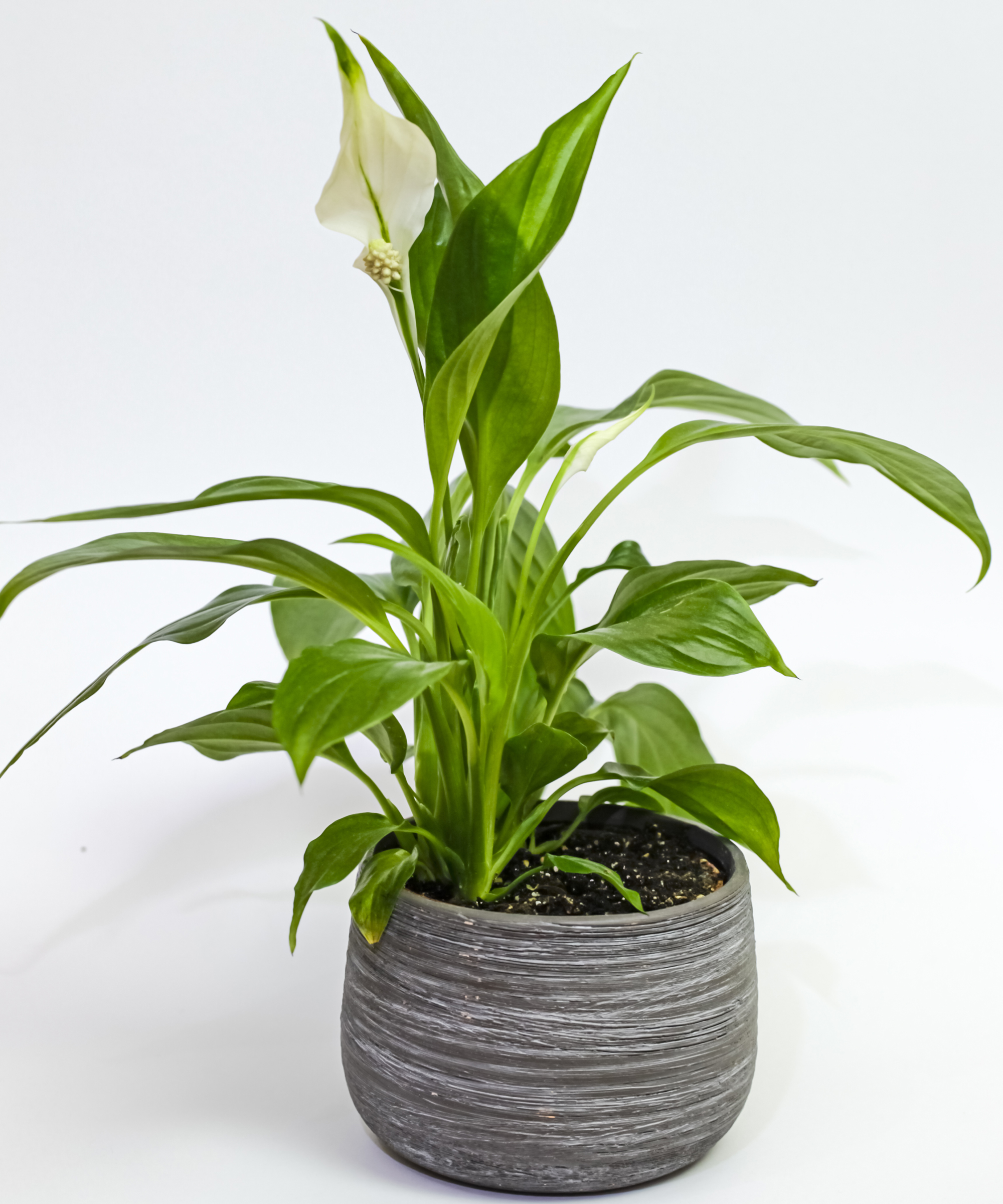
This is one of the best low maintenance indoor plants for people who don’t always keep on top of watering plants. It has glossy, green leaves with occasional elegant white folded flowers.
Stand it in bright but indirect light and water only when the top of the compost is dry. Mist the leaves from time to time and feed once a month in spring and summer only.
If the plant droops, it means it is thirsty, but it will soon recover if placed into a sink or bowl of water for 30 minutes. Snip off the spent flower heads and any dry leaves. It will grow up to 23in (60cm), so it’s a nice compact one for smaller spaces.
6. Devil’s Ivy
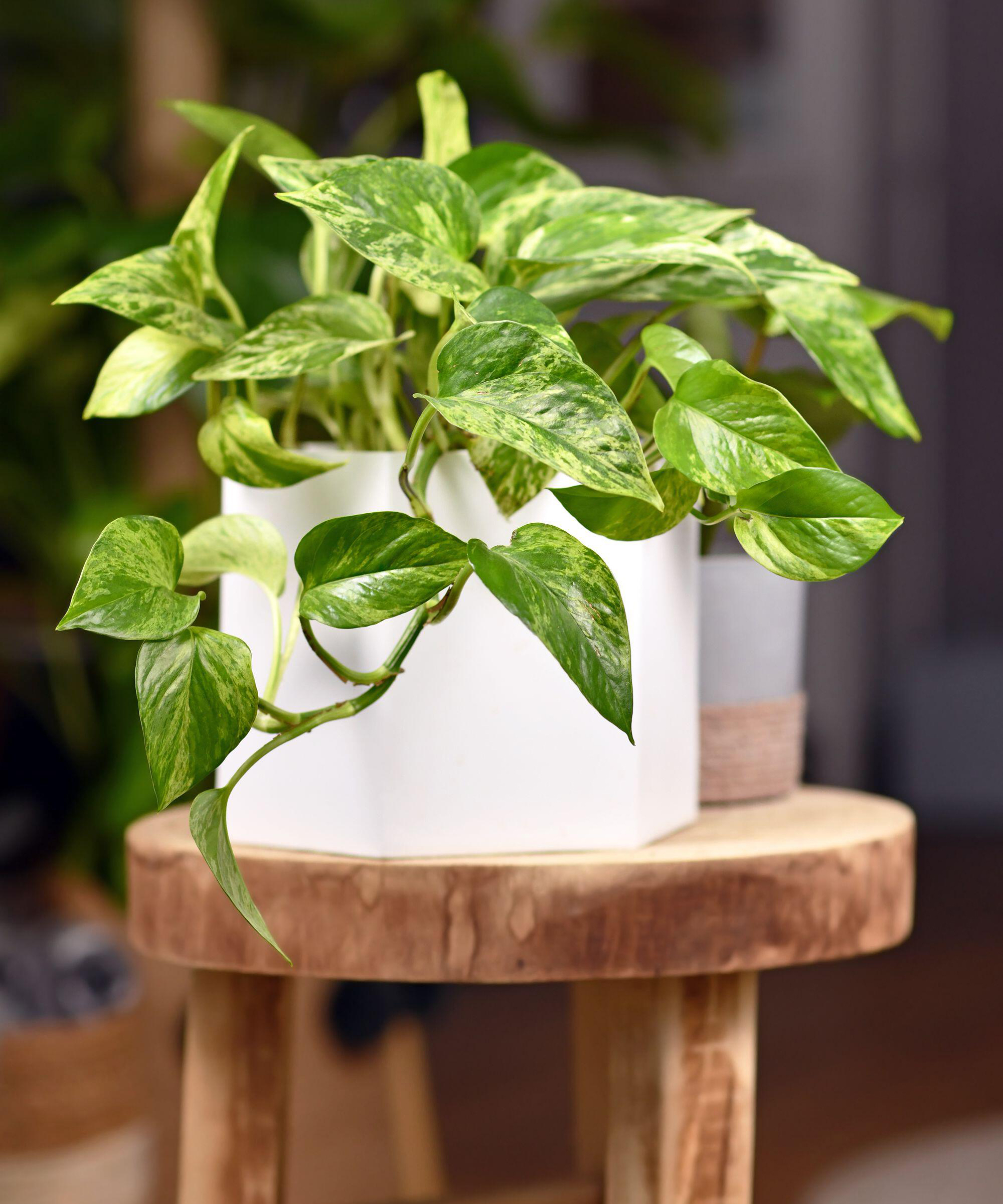
Here’s a low maintenance houseplant which will thrive in any light conditions, so if you have a dark apartment or house, this one is a must.
It has heart-shaped leaves on a twisty stem. It’s a climber, but it can be trailed from a pot, or trained up an interior wall. In the wild, it grows in deep shade, hence the name – Devil’s Ivy (friend of the darkness).
Water it when the top inch (few centimeters) of compost feel dry, and feed it once a month. It can be a large plant, growing up to 8ft (2.5m), but if it gets out of hand, simply trim it back with a pair of sharp scissors.
Looking for plants that will thrive in shady outdoor spots? Our guide to the best shade loving plants has plenty of suggestions.
7. African Spear

Contemporary and stylish, this is a brilliant low maintenance houseplant to pop on top of a desk. It has cylindrical, lance-shaped leaves with a striking silhouette, and it needs almost no attention to thrive.
It will cope well in indirect light, and needs only moderate watering, even in the growing months of spring and summer.
8. Aloe Vera
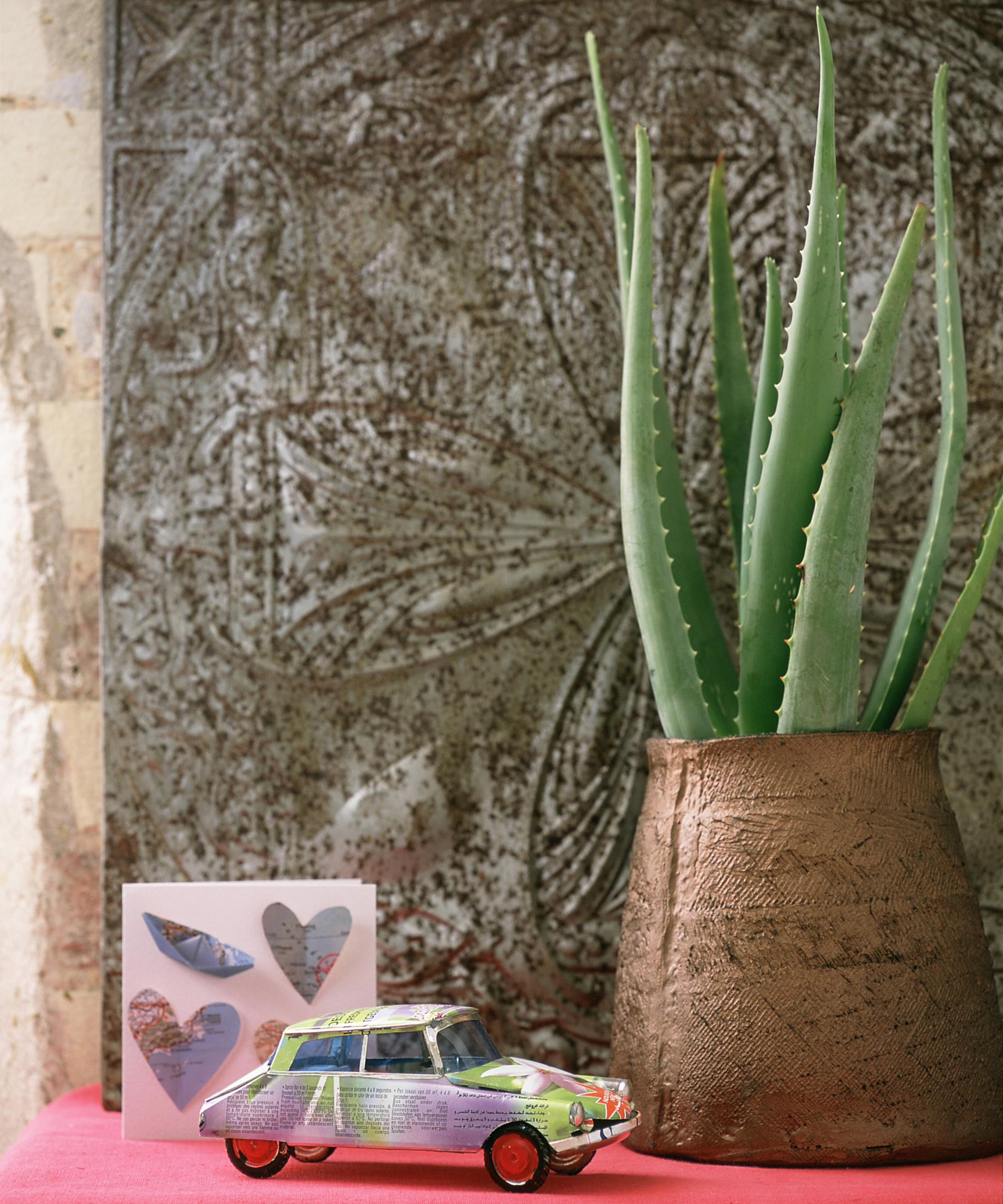
Always a popular choice for indoor plant ideas in any room, this succulent is an attractive but undemanding choice. It has fleshy, serrated edge leaves and fresh green color that will suit any space. It needs a bright spot in a warmish room but apart from that, it’s a cinch to grow.
Water when the top inch or few centimeters of compost feel dry in spring and summer, but hardly at all in the winter months.
Our top tip? Add a top layer of grit to the potting compost as this will help to stop the plant from rotting if you do accidentally over water it.
There's more advice on how to care for succulents in our guide, too.
9. Monstera
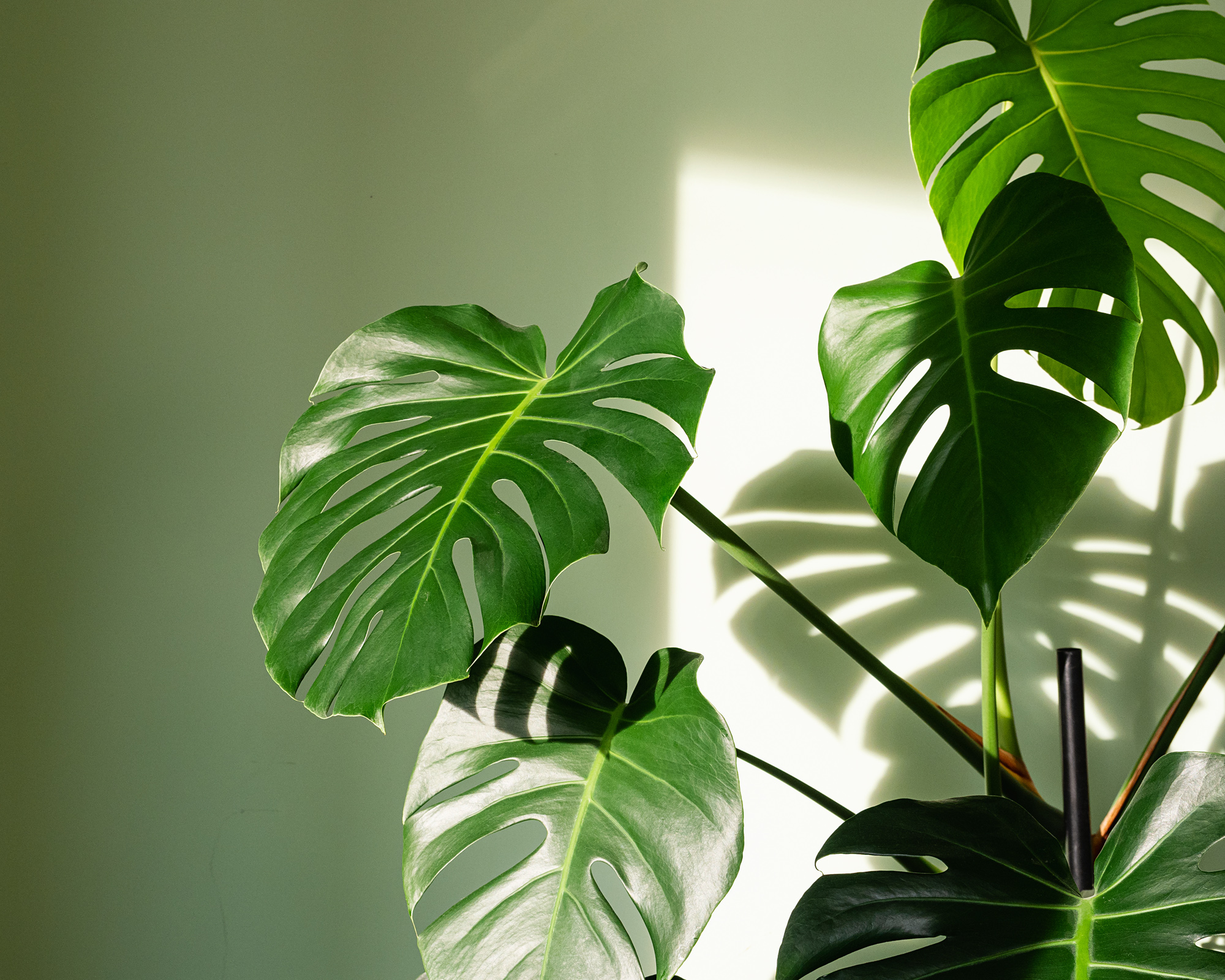
Monstera, also known as Swiss Cheese plant, is an Instagram favorite. It might look as if it has complex needs, but it's actually one of the best low maintenance indoor plants you could choose. It’s a straightforward one to keep, so long as you don’t overdo the watering.
It has large, beautifully shaped ‘cut’ leaves on thick stems. It tolerates a lightly shaded position, and dislikes direct sunshine. Water only after the top inch or few centimeters of compost feel dry when you push your finger in. If the leaves turn yellow, it’s a sign that it’s too wet.
Wipe over the leaves occasionally to remove dust, and mist with a sprayer. If the edges of the leaves turn brown, this might be a sign that the plant needs more moisture, or a larger pot. Be aware that it can grow up to around 6ft (1.8m) tall, so it is best avoided if your accommodation is small.
If your plant outgrows its pot, you can find out how to repot a plant in our guide.
10. Ponytail Palm
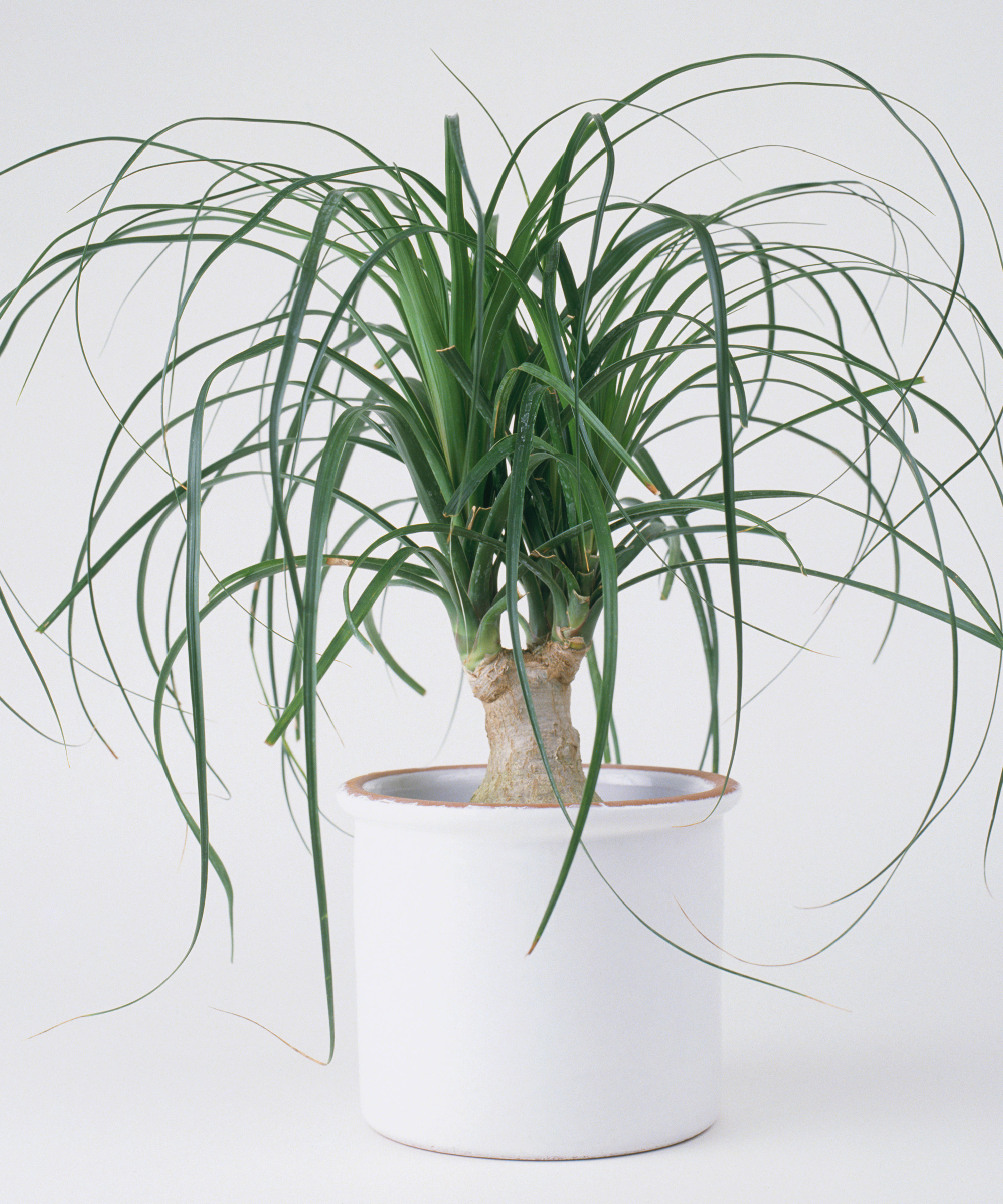
Slim cascades of curly green leaves sprouting from a bulbous trunk characterize this easy-care choice with an exotic look. It’s one of the few low maintenance houseplants which tolerates direct sunlight and it does not need frequent watering, even from spring to autumn. In fact, over watering is the enemy with this one, so take care not to let it sit in wet compost, or it may rot at the base.
11. Christmas cactus
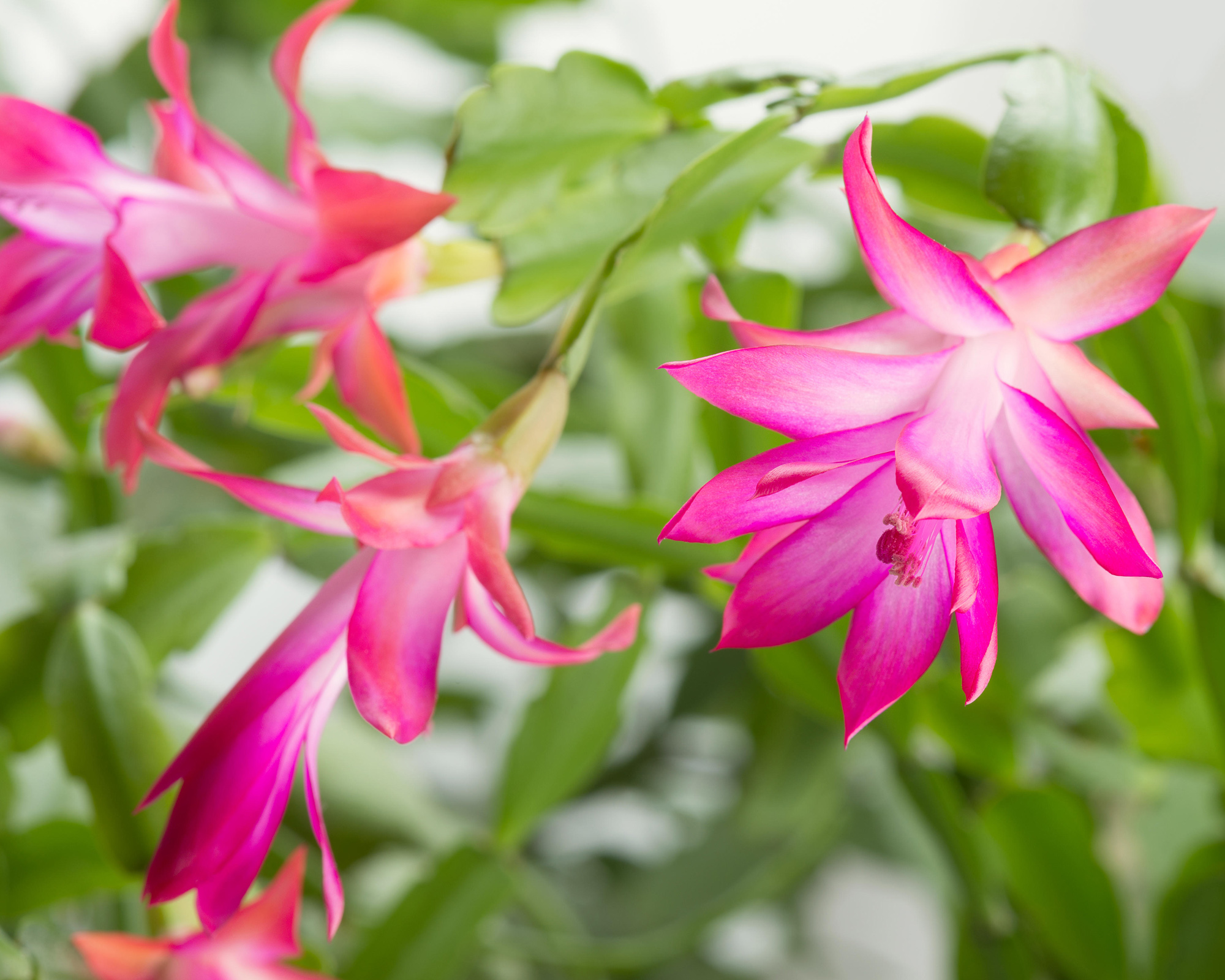
A pretty, non-spiny cactus that is smothered in exotic pink flowers at Christmas (and at other times of the year if you’re lucky!), it looks high maintenance, but it could not be easier to grow.
Pop it in bright, indirect light and only water when the soil feels dry to touch. It will need even less liquid in the winter. It might need repotting every couple of years, in gritty compost for good drainage. If the leaves turn red, it’s a sign that it is getting too much light, so move it to a shadier spot.
What are the benefits of indoor plants?
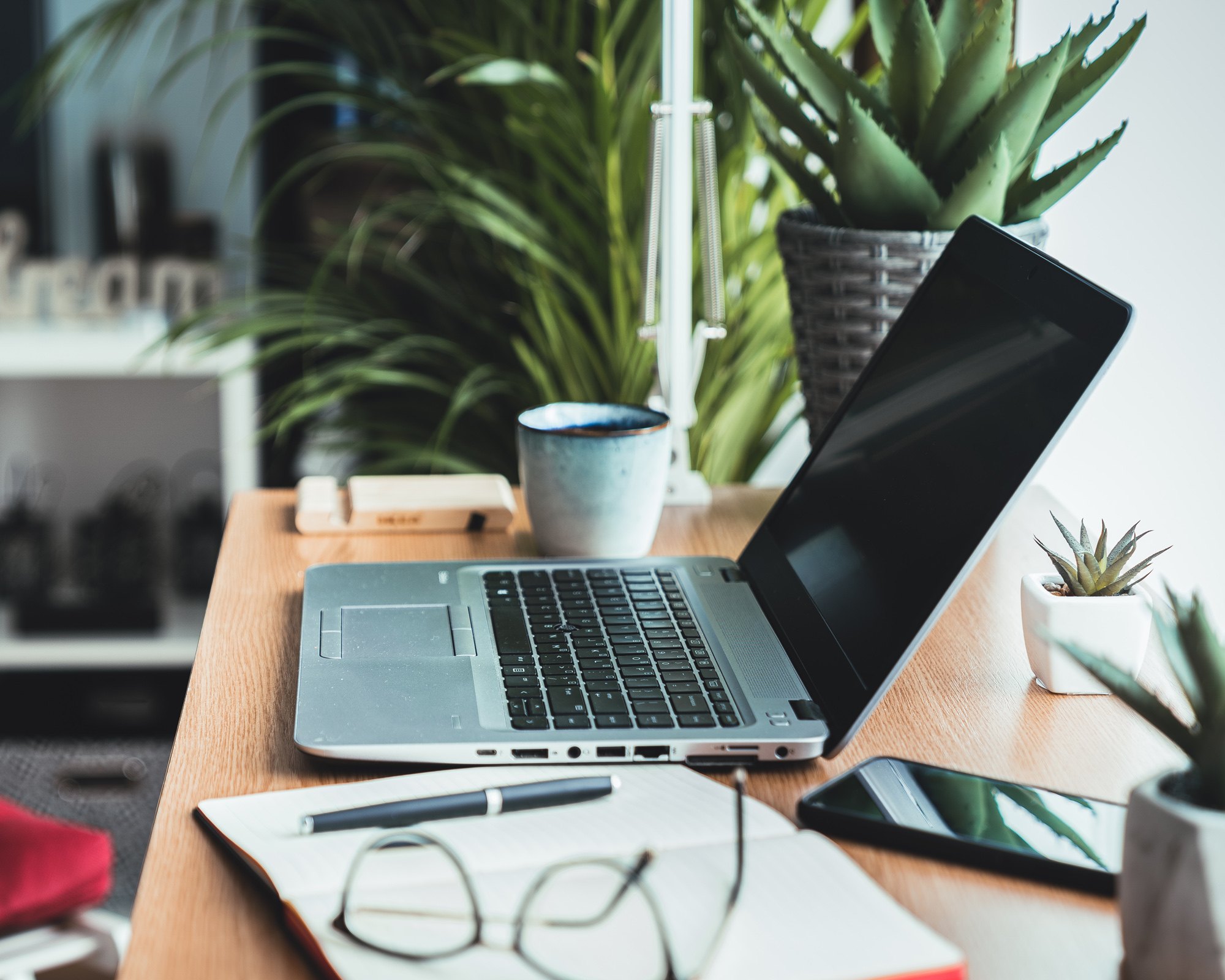
According to Rebecca Snowdon, interior style adviser at Furniture Choice, 'indoor plants can easily transform your space and bring a tropical style and summertime feel into your home. Not only do plants serve as a great interior accent, but they also create a cleaner breathing space.'
What's more, the American Psychological Association found that workers in spaces with plants showed a 15 per cent higher productivity than those without green offices, so they’re a great addition to any home office, garden office or home working area too.
How do you keep low maintenance indoor plants healthy?

The experts at ABC Flora have these essential tips to give your low maintenance houseplants the best chance of survival.
- Sun scorching causes irreparable damage to plants. It's often best to keep your low maintenance houseplants in a shaded spot in the house during peak sun and only give them sunlight during cooler periods of the day, such as the early morning.
- Avoid watering leaves directly if your plants are going to be in the sun, as water droplets can magnify the sun’s rays.
- Don’t overwater your plants. Flooding a plant can cause more damage to a plant than a little dehydration. If your plant is wilting or has brown leaves despite having damp soil, this may be a sign that you have overdone it on watering.
- Steer clear of fans. While fans and air conditioning units are perfect for helping us cool down in summer, it can be harmful to blow air directly onto plants since they can quickly dry out soil, causing plants to become dehydrated. Air conditioning can harm tropical plants as they need humidity.

An experienced freelance journalist, editor and columnist writing for national magazines and websites, Fiona now specialises in gardens. She enjoys finding and writing about all kinds, from the tiniest town plots to impressively designed ones in grand country houses.
